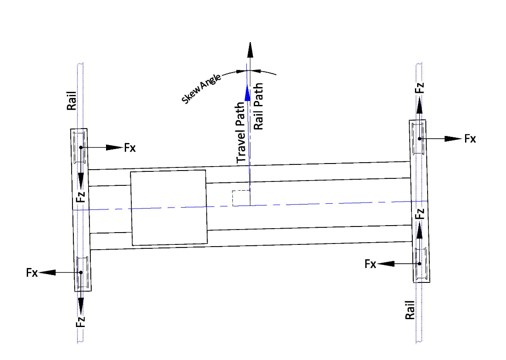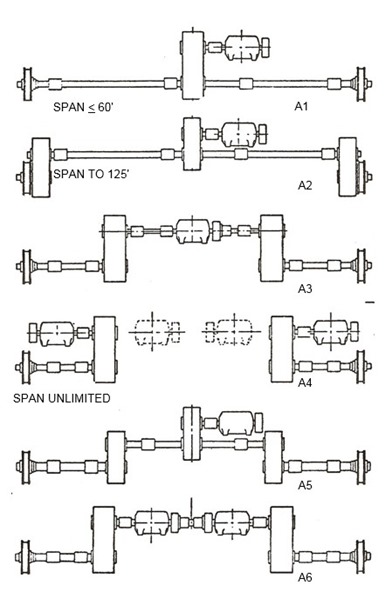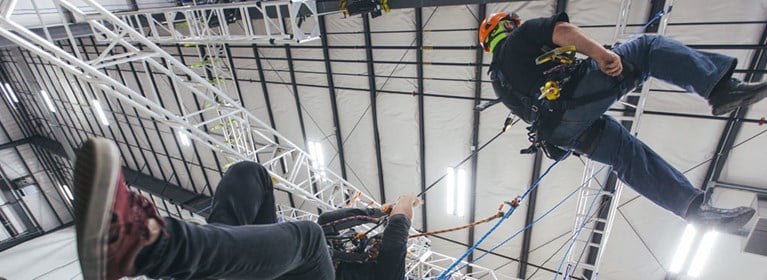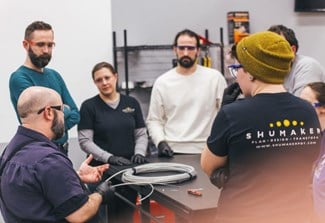Recommendations for Skewing Issues on an Overhead Crane
Manufacturing |
Crane Systems |
Safety and Training |
By Columbus McKinnon Training |
Jun 10, 2015
Daniel, a salesperson for a Columbus McKinnon Channel Partner and recent safety webinar attendee, asks:
“On my overhead crane, the rail to flange contact is opposite end-to-end of the end truck. On one end truck, the drive wheel to the flange is on the inside and on the other wheel, the contact is on the outside. What are your recommendations for dealing with these skewing issues in this situation?”

Our Columbus McKinnon training team answers this question on skewing issues:
I gather from the question the crane is traveling in an orientation similar to the above example. This situation is not commonly caused by the runway. It is most often related to the crane.
If the crane is an A1 “type” drive configuration (see graphic below) some of the possible causes are:
- Drive shaft couplings are defective/sloppy/loose
- Weight/load is being carried at one extreme or the other on the bridge (trolley to the left or right of bridge)
- Crane bridge is out of square
- End trucks are bent or warped
- Drive wheels are not “truly parallel.” This means the perpendicular centerline of the left-side drive wheel is not the same line as the perpendicular centerline of the right-side drive wheel.
- Drive wheel diameters are not matched within CMAA Specification #70
If the crane is an A4 “type” drive configuration some of the possible causes are:
- Weight/load is being carried at one extreme or the other on the bridge (trolley to the left or right of bridge)
- Crane bridge is out of square
- End trucks are bent or warped
- Drive wheels are not “truly parallel.” This means the perpendicular centerline of the left-side drive wheel is not the same line as the perpendicular centerline of the right-side drive wheel
- Drive wheel diameters are not matched within CMAA Specification #70
- Bridge drive motors are not producing same output speed, starting torque, etc.

In case you missed our Safety Webinar “Identifying Tracking Problems with Cranes,” you can view it here.
North America - EN







